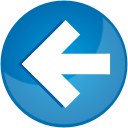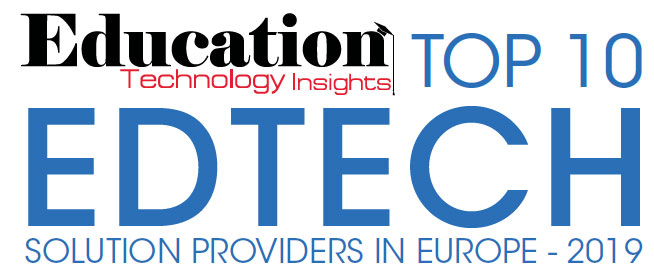THANK YOU FOR SUBSCRIBING
Be first to read the latest tech news, Industry Leader's Insights, and CIO interviews of medium and large enterprises exclusively from Education Technology Insights
 Markus Goldbach, Co-Founder and CEO
Markus Goldbach, Co-Founder and CEO“If you gently nudge students to pen down their original thoughts, it will help them become creative thinkers and writers in all walks of life,” adds Goldbach. However, this ambition is yet to materialise among those younger minds that tend to ‘copy and paste’ information from a myriad of sources. Moreover, copying someone else’s work has become much easier than the pen-and-paper days of yesteryears; the digital era enables students to replicate documents in just a few clicks. Along with this digital renaissance comes the need to uphold the creator’s copyright, predominantly in academia, where students hold the authorship for their work. At this juncture, PlagScan provides not only a plagiarism detection too, serving as validation for original penmanship but also its software analyses writing style helping to protect potential ghostwriting in the academic sector (‘contract cheating’).
The Didactic Instrument for the Academia
In the academic sector, teachers find it difficult to check whether their students submitted original pieces of work or copied it from various sources. Additionally, ghostwriting causes significant concern for teachers, where students get their assignments done by parents, friends, or as a job from an online paper mill. Such practices, without a doubt, deter academic integrity. In response to these educational barriers, PlagScan’s software serves as a ‘didactic tool’ that is more than just a plagiarism detection software. It supports users in evaluating academic work, ensuring the quality of educational and scientific research. The software operates in accordance with the current data security regulations and enhances plagiarism detection capabilities consistently. All of these functionalities are delivered through PlagScan’s technological architecture that combines plagiarism detection and their ‘Author Metrics’, the contract cheating detection feature.
Goldbach considers a real-life scenario to explain these two features: “While PlagScan traditionally analyses whether a text is copied or not, it now also provides compelling evidence whether the student himself/herself has written the assignment. Our Author Metrics feature is based on the most recent advances in Computational Linguistics, in particular Stylometry, and the Peer Group Similarity Hypothesis, which helps users to detect ghostwriting.”
One of the measures accounted for in Author Metrics— lexical originality—compares the number of unique words in one document with others uploaded among the same set of resource materials. When one set of educational materials is shared in the class under the guidance of teachers, students writing on the same topic should exhibit low variance in terms of lexical originality. For ghostwritten documents, the variance is generally high, indicating the teaching faculty that the uploaded work may not be entirely original. The team at PlagScan has carried out various such experimental studies with the Peer Group Similarity Hypothesis. One of the recent studies correlates to the cultural and socioeconomic differences that exist within a classroom. “Linguistic metrics aside, the social differences in classroom incite new pedagogical approaches, which are responsive in recognising that the classrooms are increasingly less homogenous,” elaborates Goldbach, shedding light on how the teaching faculty can maximise the benefits of the software. Multicultural classrooms challenge pedagogies on how to effectively carry out anti-plagiarism education. These changes include requiring instructors to be conscious of the various backgrounds at play in the classroom and to incorporate them into the learning experience. No doubt, the multicultural perspective is the future of education and one that PlagScan supports as a protector of academic integrity and a thought leader in educational technology.
Our Author Metrics feature is based on the most recent advances in Computational Linguistics, in particular Stylometry, and the Peer Group Similarity Hypothesis, which helps users to detect ghostwriting
In order to deliver this level of academic integrity, PlagScan employs machine learning algorithms that obtain content from a diverse array of data sets and repositories. Goldbach says that the company takes four different sources for plagiarism check into account. The first of the four is the open internet, where people most often copy information from. PlagScan obtains the global search indices for relevant data repositories by deep-crawling specific academic content and collaborating with multinational organisations, effectively comparing openly available information sets with the submitted student assignments. Secondly, PlagScan aggregates offline repositories through its symbiotic partnership with publishers. The other two are interdependent sources of information. “For the third and fourth data sources of plagiarism check, consider this use case,” explains Goldbach. “Clients can provide us materials that they have in their repositories to compare it with the documents that need to be analysed. So this is source three covering collusion Now picture biology classes at different universities where assignments can be similar and students may exchange their work across cities or countries. Source four is anything our customers share with each other. In this symbiotic setting, academic institutions can cross-reference with other universities on similar genres of education.”
"Refining a written text with PlagScan would potentially optimise the content for the search engines for better match results in terms of accuracy and legitimacy"
With the four sources PlagScan features multidisciplinary comparison of information. Currently, they are also working on a cross-language comparison functionality, enabling multi-lingual analysis of the text.
The software also extends beyond these academic use cases, wherein organisations and individuals can check for copyright infringements of their intellectual property. Quite frequently, such intellectual property is used by other content creators without acknowledging the original creator. These cases of copyright violations could be mitigated through PlagScan. In addition to identifying violations, refining a written text with PlagScan would potentially optimise the content for the search engines for better match results in terms of accuracy and legitimacy. And, as Goldbach explains it, all of these benefits can be availed by merely uploading documents and checking boxes for required use cases to obtain the desired result in minutes or even seconds, based on the length of the document. Depending on the use case, individual users, universities, and enterprise businesses can optimise their content workflows. The company offers PlagScan with flexible API integration functionalities that blend in with a variety of learning / content management systems and other enterprise applications. This allows PlagScan users to integrate the software seamlessly with their existing workflows as an add-on.
With these value-adds, PlagScan emerges as a jack of all trades in the academic integrity space, showcasing a multitude of functionalities designed to uphold the goal of the company— giving credit where it is due. It goes without saying that while there are plenty of plagiarism tools in existence, PlagScan offers a promising avenue to retain and enhance academic integrity, all the while focusing on the development of students as original writers and creative thinkers - and trying to establish fair and equal education standards worldwide.
December 06, 2019
| Share this Article: Tweet |
Company
PlagScan
Management
Markus Goldbach, Co-Founder and CEO and Johannes Knabe, CTO
Description
PlagScan provides a plagiarism detection and authorship verification software to retain originality in content creation. PlagScan’s software serves as a ‘didactic tool’ that is more than just a plagiarism detection software, thereby supporting users in evaluating academic work and ensuring the quality of educational and scientific research. The company has devised an algorithm that comprehends stylistic similarities such as long sentence construction, level of writing, and hundreds of other linguistic parameters. It applies a Gaussian distribution for a varied set metrics to score students based on the authenticity of their assignments and submissions









